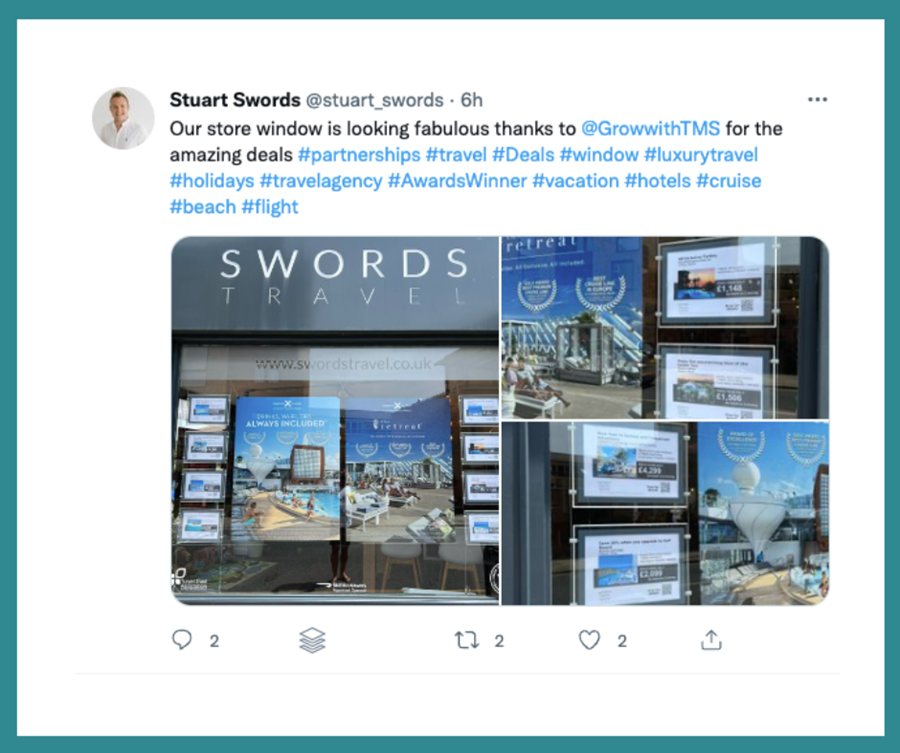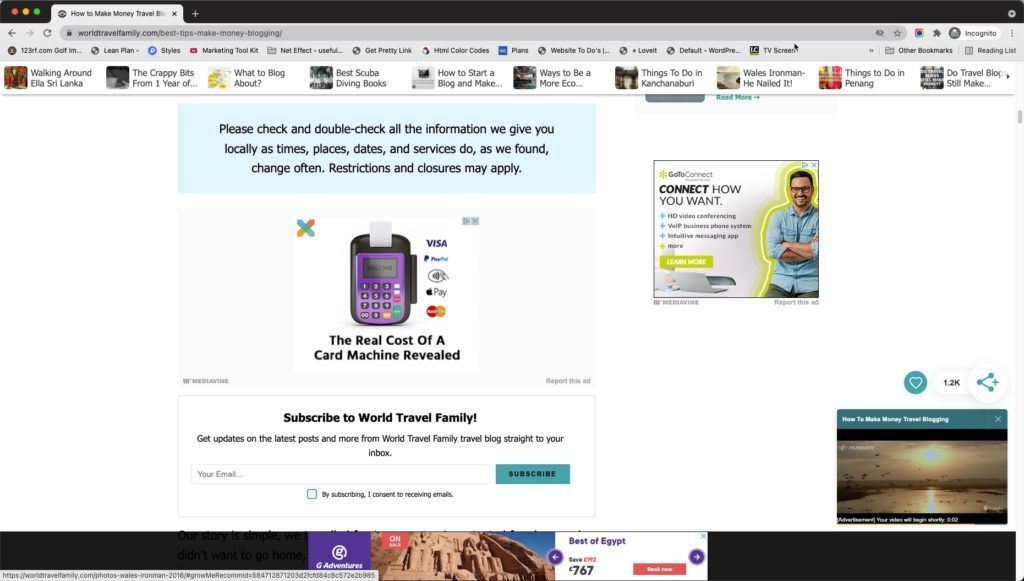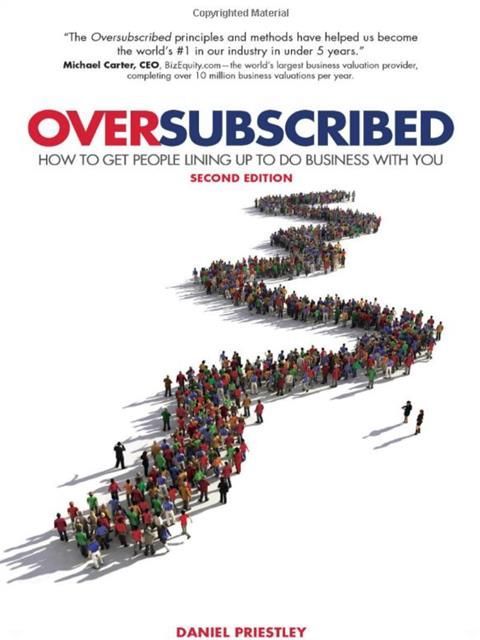Apple vs Facebook Privacy Changes – how it affects Marketing & Advertising for small businesses
Steve • April 29, 2021

Run an automated SEO audit on a travel website and you’ll usually get a scary-looking report back: • Thousands of pages with “duplicate titles” • Meta descriptions “missing” or “too short” • Endless URLs that apparently need “fixing” If you work in travel, that kind of report can be pretty demoralising. It sounds like your site is broken, your SEO is a disaster, and you’ll never rank for anything meaningful. The reality is usually very different. Most automated tools – Screaming Frog, Sitebulb, SEMrush and the rest – are brilliant at crawling websites. But they make one big assumption: Every URL they find is a standard web page, built by hand, and intended to be fully optimised for SEO. That’s just not how modern travel sites work. In this post, we’ll look at why automated audits misread travel websites, what those “issues” really mean, and where SEO effort genuinely is worth spending. ⸻ How audit tools see your site Tools like Screaming Frog do one simple thing very well: 1. Start from a URL. 2. Follow every link they can find. 3. Treat every URL they discover as a “page” and test it against a checklist: • Has it got a title tag? • Is the title unique? • Is there a meta description? • Is there enough content? • Is it indexable? If they find 20,000 URLs, they assume there are 20,000 pages that should all be lovingly crafted, unique, SEO-friendly landing pages. On a typical corporate site that might make sense. On a travel site, it doesn’t. ⸻ How travel websites are actually built Most travel sites have two very different layers: 1. Core content pages (the “real” website) These are the pages everyone recognises: • Home, About, Contact, Enquiry • Destination landing pages (e.g. Africa Holidays, Mediterranean Cruises) • Service pages (e.g. Tailor-Made Travel, River Cruises) • Blog posts and guides They live in your CMS (WordPress, Duda, the TMS Website Platform, etc.) and you control: • The page title and meta description • The on-page copy and images • Whether the page is indexable • The internal links pointing to and from it These pages should be unique and are where SEO work really pays off. 2. Dynamic product content (the “invisible engine room”) Then there’s everything powered by external systems, such as: • Booking engines (Travelgenix, Intuitive, etc.) • Tour and cruise feeds (TourHound, Widgety, in-house APIs) • Offer libraries and bedbank content These systems typically generate: • Thousands of dynamic URLs • Repeating templates (same layout, different itinerary/price) • Generic or templated meta data They exist for one main reason: to show live product and pricing. They’re there so customers can see what’s available right now – not to win Google’s “Best Optimised Meta Description” award. From a user and business point of view, that’s absolutely fine. From an automated audit’s point of view, it looks like carnage. ⸻ Why your audit report looks terrifying Once you understand that distinction, most of the “issues” in an audit report start to make sense. Duplicate titles and meta descriptions If your feed generates 3,000 cruise sailings to the Mediterranean, it’s not unusual for an audit to report: • 3,000 pages with titles like “Mediterranean Cruise – Enquire Now” • 3,000 meta descriptions starting “Explore our latest Mediterranean cruise offers…” To an SEO tool, that’s a sea of duplication. To your booking system, it’s an efficient way to show lots of itineraries without writing custom copy for each one. Thin or similar content Dynamic product pages often share: • The same structure • Very similar wording • Only a few lines changed (dates, ship names, board basis) Again, that’s perfectly normal for inventory pages. You want consistency so customers can compare options easily. Indexation warnings Some dynamic pages are deliberately set to: • noindex (to keep Google focused on higher-level pages) • Or blocked by rules to stop search engines crawling thousands of near-identical URLs Audit tools flag this as a “problem”. In reality, it’s often exactly the right decision. ⸻ Where SEO actually matters on a travel site The trick is not to ignore SEO, but to focus it where it counts. 1. Get your technical foundations right This is the hygiene layer: • Ensure the site forces visitors onto HTTPS • Make sure key pages are indexable and not accidentally noindexed • Check canonicals aren’t pointing everything at the wrong place • Fix obvious broken links and redirect loops These are usually platform-level settings and are worth getting right once. 2. Focus on the core pages you control For your main CMS pages: • Give each one a clear, unique title • e.g. Luxury Cruises from the UK | Brand Name • Write meta descriptions that actually sell the click • Make sure the on-page content answers the obvious questions: • Who is this for? • What can I book here? • Why should I book with you rather than a big online brand? If you only have time to optimise 10–20 pages, these are the ones to choose. 3. Use dynamic content as a supporting layer Dynamic product pages are still useful; they just shouldn’t be driving your SEO strategy. Think of it like this: • Landing pages (destinations, cruise types, interests) pull traffic from Google. • Dynamic feeds then show the live examples, itineraries and prices that convert that interest into enquiries and bookings. You don’t need 3,000 perfectly optimised URLs. You need a handful of strong, evergreen landing pages that are well-linked, well-written and supported by good product. ⸻ SEO vs other channels: making sensible trade-offs Here’s the bit most people quietly know but rarely say out loud: For many travel businesses, SEO is not where the bulk of the marketing budget goes. And that’s OK. To really move the needle with organic search you need: • Regular, unique content (guides, blogs, landing pages) • Someone to plan, write and publish it • Time for Google to notice, test and trust that content Most independent agencies and smaller operators prefer to invest more heavily in: • Paid search (where results are immediate and trackable) • Social ads and remarketing • Email marketing and CRM • Offline marketing and repeat business A good website should support all of these: • Strong landing pages for paid campaigns • Clear enquiry paths for social and email • A solid base for any SEO work you do choose to fund The key is to be honest about where SEO fits in your overall mix, not to panic because an automated tool has highlighted 10,000 “errors” on pages that were never meant to rank in the first place. ⸻ How to work with your digital agency on this If your audit came via a digital agency or external SEO specialist, the best outcome is a collaborative one. A simple way forward: 1. Share the architecture • Explain which parts of the site are core CMS pages and which are dynamic feeds. • Ask them to filter their audit to focus on the CMS layer first. 2. Agree a priority list • Pick 10–20 key pages (home, about, enquiry, top destinations/cruise types). • Make these the first wave for on-page improvements. 3. Decide a sensible approach to dynamic URLs • Which classes of URL should be indexable, if any? • Which should remain noindex to avoid cluttering the index? 4. Be realistic about content • If you want to grow organic search, agree what new content you’re actually going to produce and who will own it. • If SEO is a lower priority right now, that’s fine – focus the work on hygiene and key landing pages. A good agency will appreciate the clarity and will be able to use their tools in a way that reflects the reality of how travel sites are built. ⸻ Final thoughts Automated SEO audits are a bit like blood tests: they can highlight where to look, but they don’t tell the whole story on their own. On a travel website, thousands of “issues” in a crawl report often boil down to this: • The tool has treated every dynamic product URL as if it were a hand-crafted marketing page. Once you understand the difference between core content and dynamic feeds, you can: • Stop worrying about the noise • Focus on the handful of pages that really matter • Decide how much you genuinely want to invest in SEO versus other channels And that’s when SEO stops being a source of anxiety and starts becoming one more sensible, measured part of your overall marketing mix.

It’s been a great week, let’s grab a coffee and catch up … Well… other than political ethics, inflation etc! … sometimes the sun shines both in the real world and metaphorically, and this has been a good week. In today’s update … Reviews, good for business, and good for the soul Why I love …
Customer Reviews – Great for Business, Great for your Well-Being Read More »
The post Customer Reviews – Great for Business, Great for your Well-Being appeared first on travelmarketingsystems.com.
What’s this post about ? How Julian Richer’s business tactics selling electronics parallels how Retail Travel Agents can market themselves effectively. There aren’t many retailers that compare easily to selling travel – infrequent, high value purchases. So it’s not easy to find examples of how other industries are tackling issues similar to our own and …
How to avoid the online asteroid …. business lessons from Julian Richer Read More »
The post How to avoid the online asteroid …. business lessons from Julian Richer appeared first on travelmarketingsystems.com.

In these difficult times – it’s very easy to look at other businesses and wonder if they have not got a better business model to you. In this paper – we are looking at: Travel Agent Website vs Travel Blogger site 1. Making Money Travel Agent Site A Travel Agent site is primarily used …
How to make money out of a Travel Website – Blog vs Travel Agency? Read More »
The post How to make money out of a Travel Website – Blog vs Travel Agency? appeared first on travelmarketingsystems.com.
Introduction The Covid 19 pandemic not only shut down the travel industry, but also ended a number of travel agents businesses. But it wasn’t just about not selling holidays. How did Hayes Travel survive the pandemic ( and hoover up some smaller agents who could not afford to keep going)? How is Trailfinders such a …
Is there a new Type of Travel Agent being born? Read More »
The post Is there a new Type of Travel Agent being born? appeared first on travelmarketingsystems.com.

When will Travel Restart? For those of you who watched Amazing Hotels, Life Beyond the Lobby last night it was a reminder of what life was like travelling without masks. But also just how important hotels like Jade Mountain are to local communities. Built by hand with no machinery and employing over 500 local St …
Follow the facts… and the logic, and travel will restart from June 2021 Read More »
The post Follow the facts… and the logic, and travel will restart from June 2021 appeared first on travelmarketingsystems.com.
What a difference a month makes I spoke to one of our clients this week and I thought he summed up where we are with Covid 19 In December 2020 we could hear clients talking about wanting to book holidays In January 2021 – we can see them at the door …hopefully by March 2021 …
A Time for some Spring Cleaning Read More »
The post A Time for some Spring Cleaning appeared first on travelmarketingsystems.com.
Why Plan? Very few small travel businesses sit down at the beginning of the year to plan out their email marketing. There are loads of excuses…usually along the lines of ‘no time’ and ‘no resource’ or ‘don’t know how to’. The truth is, if you don’t plan, you won’t be consistent in your email marketing. …
Travel Agent 2021 Travel Marketing Plan Read More »
The post Travel Agent 2021 Travel Marketing Plan appeared first on travelmarketingsystems.com.

Hurray – it’s 2021 , and yes, despite the recent lockdown (let’s face it, we all knew it was coming) I’m really looking forward to 2021. Why? For one – It is not going to be as bad as 2020! We all hope the vaccine will return us to normal, but the reality is that …
Welcome 2021 Read More »
The post Welcome 2021 appeared first on travelmarketingsystems.com.

